How to Fix 0xC10100BF (This File Isn’t Playable)
The error code 0xc10100BF (This file isn’t playable) occurs for some Windows 10 users when they attempt to play MP4 files on the computer using the Movies & TV app or Windows Media Player.

If you’re determined to get to the root cause of this issue, you should start by deploying the integrated troubleshooting utilities that might fix this problem automatically (Windows Media Player Troubleshooter and Video Playback Troubleshooter).
In case you already did this with no success, the next logical step is to try and reinstall or reset the problematic application. In case you’re dealing with a corrupted Windows Media Player or Movies & TV app instance, this operation should fix the problem entirely.
However, in case the only time you’re seeing this error code is when trying to open files that you previously downloaded over the Internet, ensure that the download was not interrupted before it’s completion. It’s also possible that an overprotective AV interference stopped the data exchange before the operation was complete.
Also, if you’re attempting to play the .mp4 files that are triggering the error from a flash drive, test to see if you’re not actually dealing with bad sectors by re-downloading the files on your HDD or SSD.
And finally, if you didn’t try this already, install and use a 3rd party equivalent video playback tool like VLC and see if the videos are playing without issues. VLC in particular is capable of playing partially corrupted files when other equivalents fail.
Method 1: Running the Dedicated Troubleshooter
Whether you’re encountering this problem with the Windows Media Player program or with the newer Movies & TV app equivalent, you should start by seeing if your Windows installation is not able to resolve the problem automatically.
Some affected users have confirmed that they managed to fix the problem and play videos without the same 0xc10100bf after running the dedicated troubleshooting utilities:
- If you’re encountering this problem with Windows Media Player, you should be able to fix the problem by running the Windows Media Player Troubleshooter.
- If you’re encountering this error code with the Movies & TV app, the proper fix is to run the newer Vide Playback troubleshooter.
Depending on the scenario that is applicable, follow the guide that fits the particular scenario that you find yourself in:
A. Running the Windows Media Player Troubleshooter
- Press Windows key + R to open up a Run dialog box. Next, type ‘control’ inside the text box and press Enter to open up the classic Control Panel interface.

Accessing the classic Control Panel interface - Inside the classic Control Panel interface, use the search function (top-right corner) to search for ‘troubleshooting’ and press Enter to retrieve the results. Next, from the list of results, click on Troubleshooting.

Accessing the classic troubleshooting menu - Once you’re inside the Troubleshooting window, click on VIew All to see the full list of available troubleshooters.
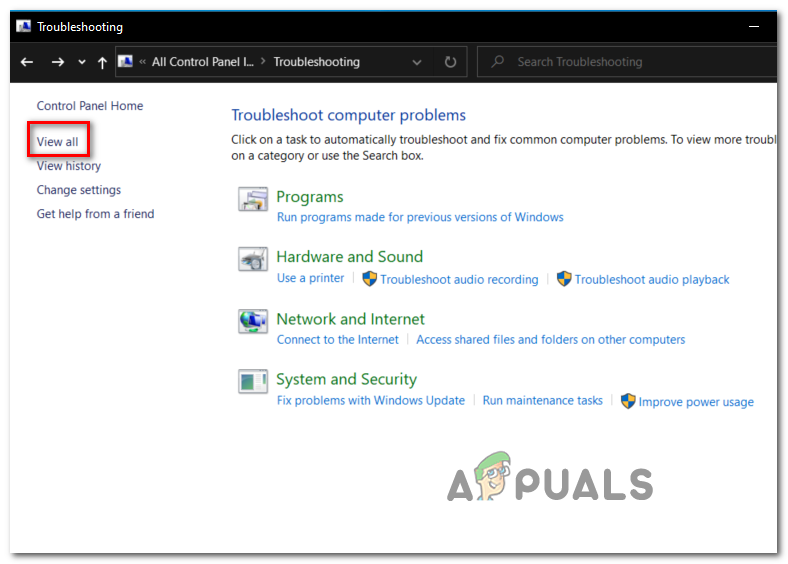
Viewing all available troubleshooters - Once you get the full list of classic troubleshooters, click on Windows Media Player Settings from the list of available options.
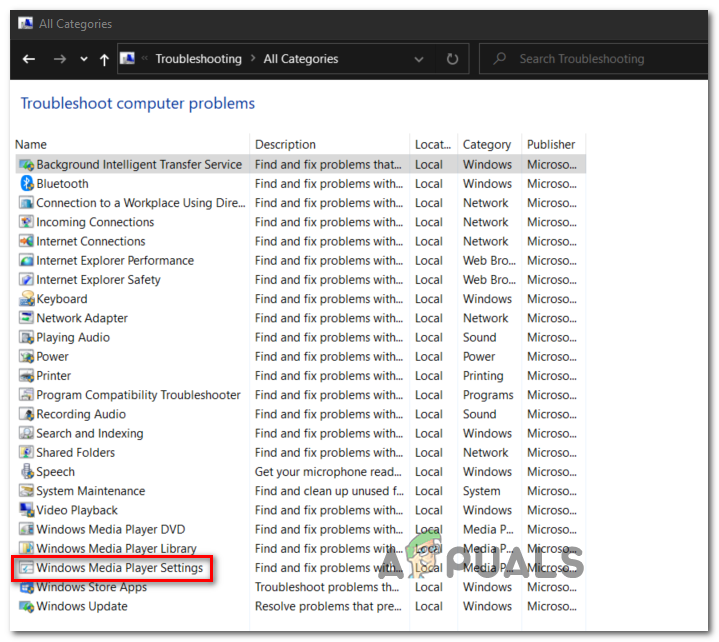
Accessing the Windows Media Player settings - Once you’re inside the initial screen of the Windows Media Player Settings troubleshooter, click on Advanced and check the box associated with Apply repairs automatically.
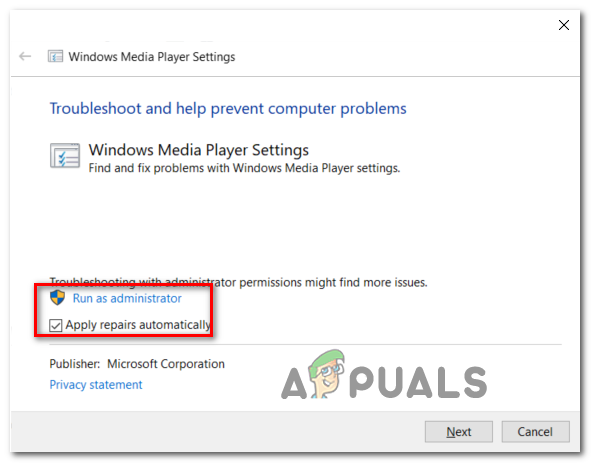
Applying repairs automatically Note: If you see the Run as administrator hyperlink, click on it in order to open the troubleshooter with admin access.
- Click Next to advance the scan to the next screen, then wait for the operation to complete.
- In case the troubleshooter does recommend a fix, click on Apply this fix.

Applying the fix for Windows Media Player Settings Note: Depending on the fix that gets recommended, you might need to follow some manual steps in order to complete the process.
- Once the troubleshooting operation is finished, restart your computer and see if the problem is resolved at the next startup.
B. Running the Video Playback Troubleshooter
- Press Windows key + R to open up a Run dialog box. Next, type ‘ms-settings:troubleshoot’ and press Enter to open up the Troubleshooting tab of the Settings app.
- Once you’re inside the Troubleshooting window, move over to the right pane and scroll down to the Find and fix other problems. From there, click on Video Playback, then click on Run the troubleshooter from the newly appeared context menu.
- After the utility is started, wait until the initial scan is complete. Then, choose from the list of potential problems and click on Apply this fix if a suitable repair strategy is recommended.
- Once the operation is complete, restart your computer and see if the problem is fixed once the next startup sequence is complete.
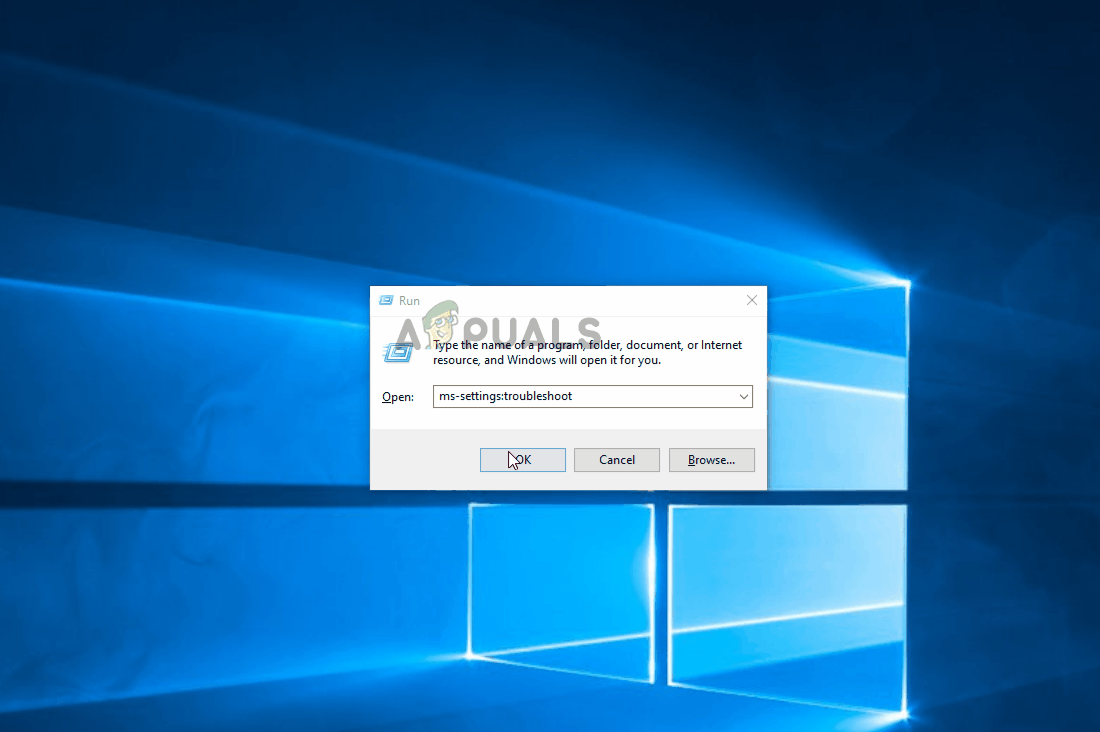
If you already did this troubleshooting attempts and you’re still seeing the same 0xc10100bf error code, move down to the next potential fix below.
Method 2: Reinstalling the Problematic App
In case the built-in troubleshooting utilities weren’t able to fix the problem, the next logical step should be to uninstall the problematic utility. Of course, the exact instructions on doing this will be different depending on if you’re encountering this problem with Windows Media Player or with the Movies & TV app.
In case you see the 0xc10100bf error code when playing videos in Windows Media Player, follow sub-guide A. If you see the error inside the Movies & TV app, follow sub-guide B.
A. Reinstalling the Windows Media Player
- Press Windows key + R to open up a Run dialog box. Next, type ‘optionalfeatures.exe’ inside the text box and press Enter to open up the Windows Features screen.
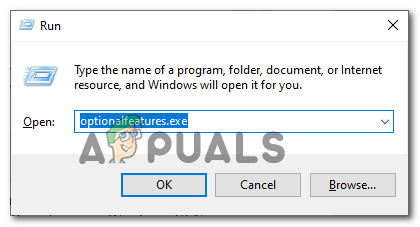
Opening the Windows Features screen - Once you’re inside the next screen, go ahead and scroll down through the list of Windows features and locate the Media Features entry. When you see it, double-click on it, then uncheck the box associated with Windows Media Player and click Ok to save the changes.
- Wait until the process is finished, then restart your computer and wait for the next startup to complete.
- Next, follow steps 2 and 3 above again, but this time enables the Windows Media Player component again.
- Attempt to play the same video that was previously failing and see if the problem is now resolved.
B. Resetting the Movies & TV App
- Open up a Run dialog box by pressing Windows key + R. Inside the text box, type ”ms-settings:appsfeatures” and press Enter to open up the Apps & Features tab of the Settings app.
- Inside the Apps & Features screen, scroll down through the list of available apps and locate the Movies & TV app.
- Once you’re inside the correct menu, click on it once to access it, then click on the Advanced Options hyperlink from under the name.
- Inside the Advanced Options screen of the Movies & TV app, scroll down to the Reset tab and click Reset to start the operation.
- Confirm the operation by clicking the Reset prompt once again.
- Once the process is complete, restart your computer and see if the problem is resolved at the next computer startup.
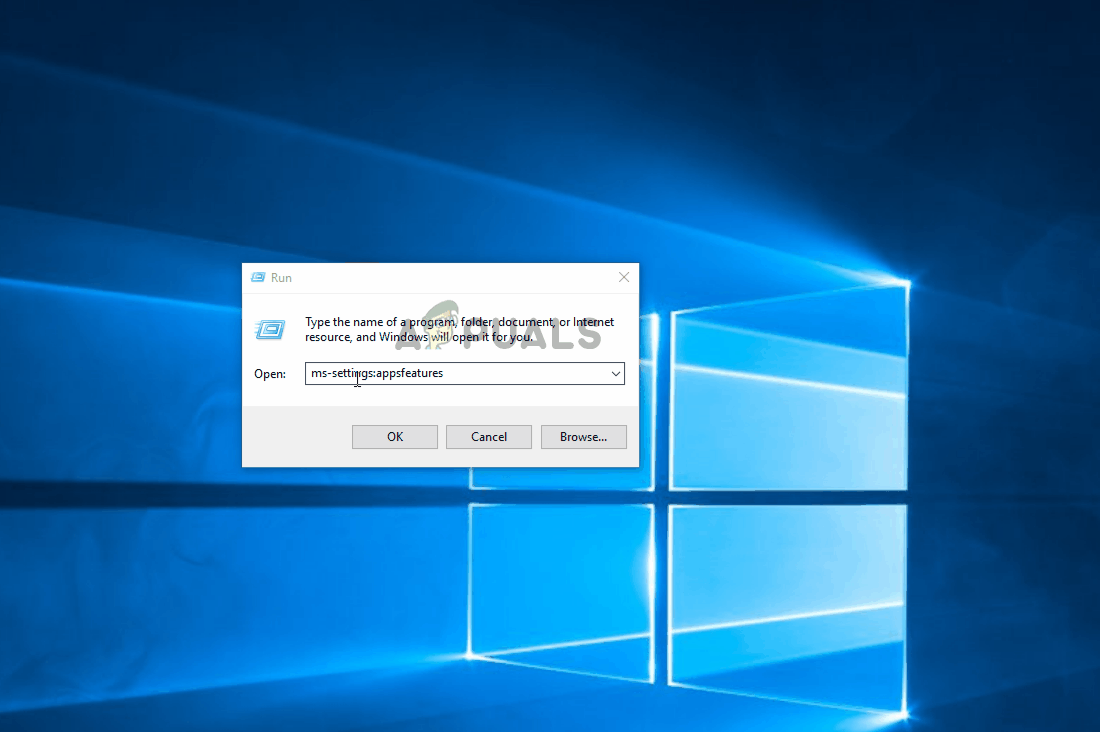
Resetting the Movies & TV app
If this problem is still not resolved, move down to the next potential fix below.
Method 3: Redownloading the Corrupted Files
In case you’re only encountering this problem with files that you previously downloaded online, file corruption might be the catalyst that’s throwing the 0xc10100bf error code. In most cases, this problem will occur after an incomplete download or after an overprotective antivirus suite ended up terminating the operation before the download was complete.
If this scenario is applicable, you should be able to fix this problem by retrying the operation and ensuring that no interference can cause it to interrupt prematurely.
In case you’re using a 3rd party antivirus, go ahead and disable the real-time protection before the operation is complete. With most security suites, you can do this by right-clicking the tray bar icon of your AV.

Note: Some affected users have reported that in their cases, it helped to download the files onto an external hard drive first and opening them from there.
If this method is not applicable or you already tried this with no success, move down to the next potential fix below.
Method 4: Using a Different USB (if applicable)
If you’re only encountering this issue only when attempting to play .MP4 files from a flash USB disc, chances are you might be dealing with a bad device – Especially if you already tried to format the drive once before and the end result is the same.
In case this scenario is applicable, chances are your USB drive contains bad sectors that cannot be fixed, so any formating attend will not prove to be effective.
In this case, try using a different USB drive or store the files directly on an HDD/ SSD and see if you still end up encountering the same 0xc10100BF error code.
If you are willing to consider using a 3rd party alternative, move down to the next potential fix below.
Method 5: Using VLC Media Player
If you tried every potential fix above and you still end up seeing the 0xc10100BF (This file isn’t playable) error when using Windows Media Player or the Movies & TV app, the only viable alternative at this point is to use a 3rd party alternative.
By far, the most versatile free 3rd party video player is VLC. Even the reason why the video playback fails is video corruption, this tool might still be capable of playing them.
If you’re willing to give this freeware a go, follow the instructions below to install and use the latest version of VLC Media Player and avoid the 0xc10100BF error code:
- Visit the official download page of VLC Media Player with your favorite browser and click on Download VLC button to download the latest installation executable version.

Downloading the latest VLC build - Once the download is complete, double-click on the installation executable, click Yes at the User Account Control, then follow the on-screen instructions to complete the installation.
- After the installation is complete, open the file that was previously triggering the error and see if the problem is now resolved.




